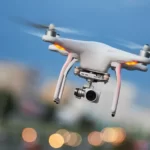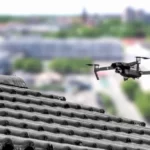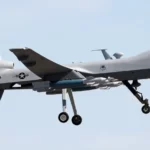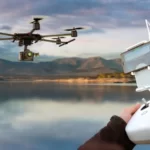Quadcopters are easier to fly than planes or traditional helicopters. Having said that always read the instructions before you attempt to fly a new device. Each quadcopter will have different settings and controls and you don’t want to crash it causing damage.
People of all ages can fly a quadcopter. There are toy versions available for children however you may find that these cheaper bottom end vehicles don’t have very good stability and are prone to crashing easily. In addition, because they are made out of cheaper materials they don’t withstand the crashes for very long and quickly become damaged.
One of the tricky skills to get used to for beginners is situational awareness. With traditional remote controlled planes or helicopters the aircraft generally moves in a forward direction and you only need to focus on directing it left and right. With quadcopters however you need to concentrate on the pitch, roll and yaw of the craft which can take a bit of getting used to.
Quadcopters have four separate motors which each control a propeller. The propellers give the craft vertical lift as well as the ability to manoeuvre. Two propellers rotate clockwise and the other two rotate counter-clockwise giving the craft stability. By speeding up or slowing down these motors you can change the roll, pitch and yaw.
Yaw Describes the motion or steering in relation to the vertical axis. By slowing down two opposite propellers you can direct your aircraft to twist to the left or right. Pitch or Thrust is created by speeding up the two rear propellers and slowing the two front propellers creating forward movement. Roll refers to the left or right tilt of the aircraft, by slowing the two propellers on the right and speeding up the two propellers the left the aircraft will roll to right and vice-versa.
For beginner drone hobbyists it is recommend to start with a cheaper version as you’re likely to crash a few times whilst you’re getting the hang of it. When you are ready to upgrade there are many different options available from ready to fly (RTF) drones that come pre-assembled to DIY models that require assembly. The benefit of DIY models is that if you do accidentally damage a part and need to replace it, you can usually by spare parts. If you are considering a DIY model, you do need to be handy with tools and have some knowledge of drones and general aerodynamic principles.
When upgrading to a better quality model you should also consider opting for a water proof model. There are several waterproof models on the market that will give you the peace of mind that you’re drone won’t be destroyed be a mishap landing in wet grass or flying through a sprinkler.
Deciding what type of drone to purchase can be overwhelming, check out our other pages for product reviews to help you get an idea of what might suit your needs.




